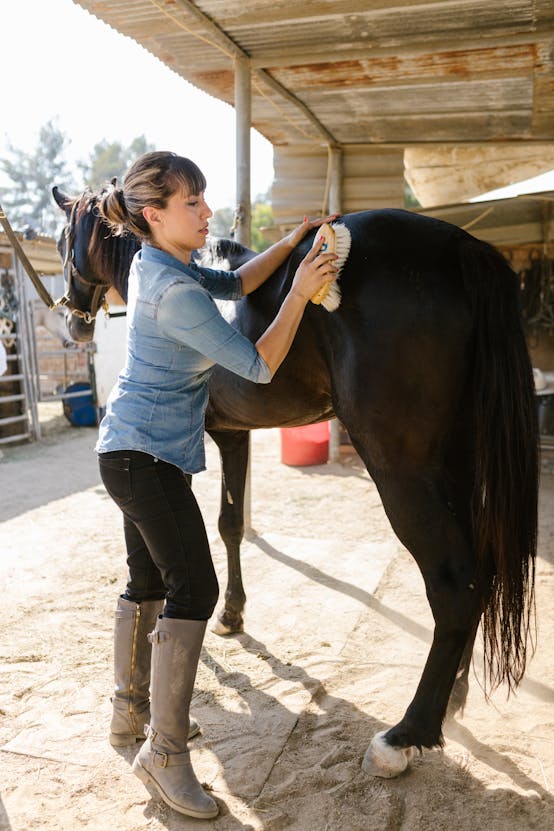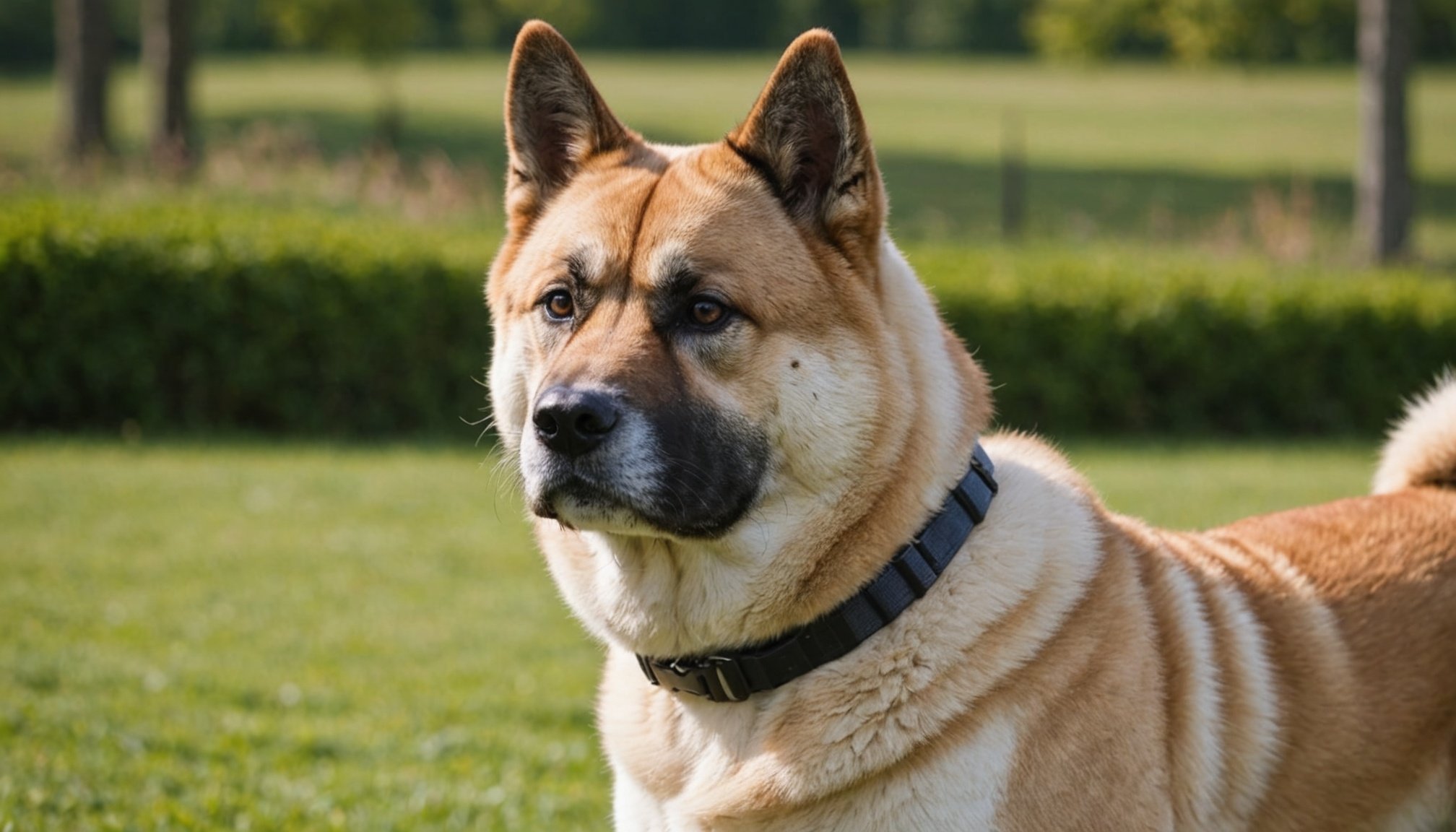Understanding the Needs of Stubborn Akitas
Navigating the world of Akita training can be complex due to stubborn dog characteristics. Akitas are renowned for their independent nature, which often manifests as stubbornness. This trait can make it challenging for owners to establish effective communication, as Akitas might not respond to commands with enthusiasm like other breeds.
The key to overcoming these challenges lies in first comprehending the behavior of your Akita. Understanding your dog’s personality and tendencies is crucial before diving into training methods or selecting a training collar. Akitas, being naturally strong-willed, may resist conventional training methods. Therefore, the choice of a suitable training collar should align with both their physical needs and behavioral tendencies.
Sujet a lire : Creating a Comfortable Climate: Essential Habitat Requirements for Saint Bernards in Warm Environments
Common training issues encountered by Akita owners often include leash pulling, ignoring commands, and showing signs of independence in decision-making. These can make even the basic training sessions feel like an uphill battle. However, by addressing these training obstacles with patience and a strategic approach, success becomes more attainable.
To improve the training experience, it might be beneficial to focus on positive reinforcement and consistency. These elements will help in connecting with your Akita, moving past stubborn tendencies, and building a cooperative relationship.
Cela peut vous intéresser : Essential Guidelines for Crafting a Nutritious Raw Diet for Your Growing Boxer Puppy
Types of Training Collars
In the realm of training Akitas, selecting the appropriate training collar types is essential to ensure effective and humane training. Delving into different options, dog owners can make informed decisions based on their Akita’s specific needs.
Standard Flat Collars
Standard flat collars are the most basic training collar types. They are often used for identification and casual leash training. While flat collars provide limited control, they are gentle and suitable for everyday use.
Prong Collars
Prong collars, equipped with metal links that rest against the dog’s neck, are designed for more stubborn behaviors. Their applications include controlling pulling habits by applying even pressure around the neck, when used correctly. However, it’s crucial to use them with caution, as improper usage can be discomforting and potentially harmful to the dog.
Electronic Training Collars
Electronic collars, another significant type of training collar, utilize static stimulation to reinforce commands, making them useful for long-distance training. Despite their reputation as effective, humane use is critical, necessitating gradual introduction and professional guidance to avoid misuse or fear responses.
When choosing the right training collar for an Akita, consider the pros and cons, along with humane training options. The collar type should align with the specific training goals, ensuring that the process is as positive and effective as possible.
Sizing and Fit of Training Collars
Choosing the right collar sizing is crucial for ensuring both the effectiveness and safety of training collars. It’s important not only for comfort but also to avoid potential harm to your pet. A proper fit ensures that the collar functions as intended, providing appropriate feedback without causing discomfort or injury.
To achieve the perfect fit for your Akita, precise measurements are essential. Begin by measuring the circumference of your dog’s neck. Use a flexible tape measure and ensure you can comfortably fit two fingers between the tape and the underside of the neck. This is critical for accommodating Akita collar measurements.
Many pet owners make common errors when selecting a collar size. One mistake is not accounting for growth in younger dogs, leading to collars that become too tight over time. Another frequent oversight is choosing a collar based solely on aesthetics, neglecting its functional fit. It’s crucial to ensure the collar remains snug yet comfortable, preventing slippage without being too tight to restrict breathing or cause skin irritation.
By carefully selecting the right size, you can significantly improve your training experience, promoting a safer and more effective environment for your Akita.
Features to Look for in a Training Collar
Choosing the right training collar can transform your dog’s experience and make training more effective. Below are some crucial features to consider when selecting a collar, focusing on adjustability, durability, and essential safety features.
Collars with Adjustable Settings
An adjustable collar is essential for accommodating your dog’s growth and ensuring comfort. Look for collars with customizable sensitivity levels, especially in electronic models, allowing for tailored training intensity. Adjustable settings help ensure that controls are neither too strong nor too mild, adapting to various training situations and different dog breeds.
Durability and Weather Resistance
Durability is a key consideration, as collars made from robust materials can withstand wear and tear from outdoor activities. A durable training collar often uses reinforced fabric or durable plastic, maximizing lifespan. Additionally, weather-resistant collars are ideal for use in all environments, allowing your dog to safely explore without compromising the device’s integrity.
Safety Features
Safety should never be overlooked. Select collars equipped with key safety features such as auto-shutoff in electronic models or reflective strips for nighttime visibility. These features not only enhance training effectiveness but also protect your pet from potential harm. Evaluating these elements ensures you invest in a collar that safely meets training needs while prioritizing your dog’s well-being.
Training Methods and Techniques for Akitas
Training Akitas, a breed known for their independence and intelligence, requires specific strategies to be successful. Reward-based training is one of the most effective training techniques for managing the natural stubbornness characteristic of Akitas. This approach involves using treats, praise, or playtime to reinforce desired behaviours, making the learning process more enjoyable for your Akita. Positive reinforcement encourages the dog to repeat good behaviour, offering an incentive that’s much more effective than punishment.
Consistency is essential in training sessions. Without it, Akitas may become confused or lose interest. Establishing a regular routine and sticking to it helps in solidifying the training. This could mean practising commands at the same time each day, or maintaining the same tone and gestures for each command.
Additionally, patience is vital, as some Akitas may take more time than others to internalize commands. Remember, the ultimate goal is to develop a mutual understanding and respect. With the right techniques and a consistent approach, even the most stubborn Akitas can become well-behaved companions. Integrating fun into sessions by varying the rewards keeps them engaged, ensuring they actually look forward to the training.
Recommendations for Reputable Training Collars
Choosing the best training collars for Akitas can significantly enhance training efforts. Opting for trusted brands ensures you get a reliable, durable product. Let’s dive into top-rated options, customer insights, and ideal purchasing locations.
Top-rated Training Collars for Akitas
When it comes to Akitas, it’s essential to use collars that resonate with their strong, independent nature. Brands such as PetSafe and SportDOG specialize in creating the best training collars that blend effectiveness with comfort. These collars frequently earn high marks in product reviews due to their user-friendly features and adaptability for large breeds. Their strength and customizable settings make them suitable for Akitas, ensuring efficient training without compromising on the pet’s comfort.
Customer Reviews and Experiences
Understanding real-world experiences is vital. Customers often praise these brands for their robust design and effectiveness in managing tough behavioural issues. In numerous product reviews, users highlight the consistent performance of these collars and the visible improvements in their pets’ behaviour, emphasizing the role of trusted brands in successful training experiences.
Where to Purchase Quality Collars
To ensure authenticity, purchase from well-known retailers like Amazon, Chewy, or directly from manufacturers’ websites. These platforms frequently offer competitive pricing and a broad selection of the best training collars, helping pet owners find the perfect fit for their needs. Trusted brands often have exclusive deals, making it a savvy option for acquiring quality collars.
Understanding Your Akita’s Needs
When it comes to Akita behavior, one of the key aspects owners notice is their tendency to be notably stubborn. This trait stems from their independent nature, often requiring a different approach in training compared to other breeds. Recognizing this behavior is vital for effective dog training. Akitas aren’t simply being difficult; their stubbornness is rooted in their history as natural guardians and protectors, which means they think independently. This is where understanding their unique training requirements becomes crucial.
Akitas need training that accommodates their intelligence and independent streak. Traditional methods might not always work, so considering techniques that encourage positive reinforcement and patience could prove beneficial. Incorporating play and loyalty-building exercises can turn training sessions into bonding opportunities, rather than power struggles.
The characteristics of an Akita also directly influence collar selection. Standard collars may not adequately support their strength or temperament. Instead, specialized collars designed for enhanced durability and control are recommended, ensuring safety for both the dog and the owner during walks. Understanding these nuances can make a significant difference in handling an Akita, leading to a well-trained, balanced companion. By paying attention to their specific training needs, owners can foster a harmonious relationship that respects the dog’s inherent qualities.













